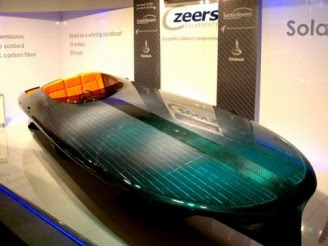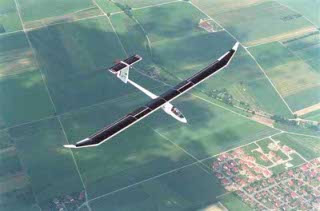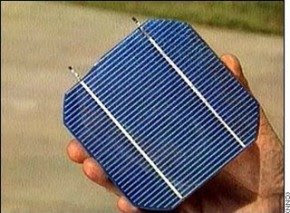
The International Space Station in December, 2001. Credit: the crew of STS-108, NASA
|
Starting in the 1950s and 60s, the space industry was the first market for photovoltaics. Photovoltaics were light and the "fuel" is both weightless and free for the taking. The high costs were never an issue since money was never a problem with the space industry.
In 1954 Bell Laboratories built the first photovoltaic module. It was billed as a solar battery and was mostly just a curiosity as it was too expensive to gain widespread use. Bell Labs used a new process called the Czochralski process to develop the first crystalline silicon photovoltaic cell with an efficiency of about 4 percent. The new technology got the first major commercial push when NASA integrated it into its new space program.
In 1955, the preparation on satellite energy supply by solar cells began. Western Electric put for sale commercial licenses for solar cells production. Hoffman Electronics - Semiconductor Division introduced a commercial photovoltaic product with 2 % efficiency for US$ 25 per cell with 14 mW peak power. The energy cost was US$ 1,785 per W.
In 1957, Hoffman Electronics introduced a solar cell with 8 % efficiency. A year later, in 1958, the same company introduced a solar cell with 9 % efficiency. The first radiation proof silicon solar cell was produced for the purposes of space technology. On 17th March 1958, the first satellite powered by solar cells, Vanguard I, was launched. The system ran continuously for 8 years. Two other satellites, Explorer III and Vanguard II, were launched by Americans, and Sputnik III by Russians.
In 1959, Hoffman Electronics introduced commercially available solar cells with 10 % efficiency. Americans launched the satellites Explorer VI with photovoltaic field of 9,600 cells and Explorer VII.
In 1962, Bell solar cells powered Telstar, the world's first communications satellite.
1964 - NASA launches the first Nimbus spacecraft - a satellite powered by a 470-watt photovoltaic array.
In 1965, the Japanese scientific programme for Japanese satellite launch commenced. The following year, in 1966, NASA launches the first Orbiting Astronomical Observatory, powered by a 1-kilowatt photovoltaic array, to provide astronomical data in the ultraviolet and X-ray wavelengths filtered out by the earth’s atmosphere.
Today, the space industry is still a significant user of photovoltaics since they play an important role in space, providing electrical power to satellites in an orbit around the Earth. Solar cells power virtually all satellites, including those used for communications, defence, and scientific research. More than 600,000 flight-proven solar cells are powering over 60 satellites.
The International Space Station uses multiple solar arrays to power all the equipment on board. The success of the space and planetary exploration missions often depends on their on-board PV power sources — providing power for experiments and for getting the data back to Earth. The three Mars rovers - Pathfinder rover Sojourner, Spirit and Opportunity, completed their missions successfully, powered by PV.
See also: http://www.aerospaceweb.org/question/spacecraft/q0298b.shtml and
http://mars.jpl.nasa.gov/MPF/roverpwr/power.html)






